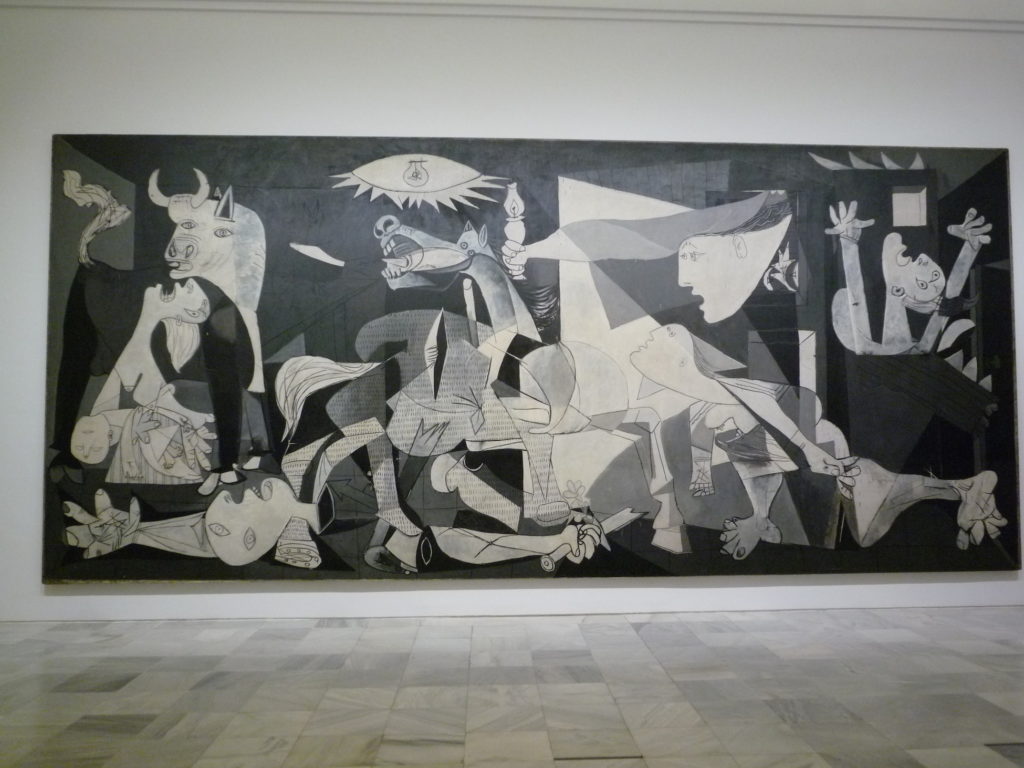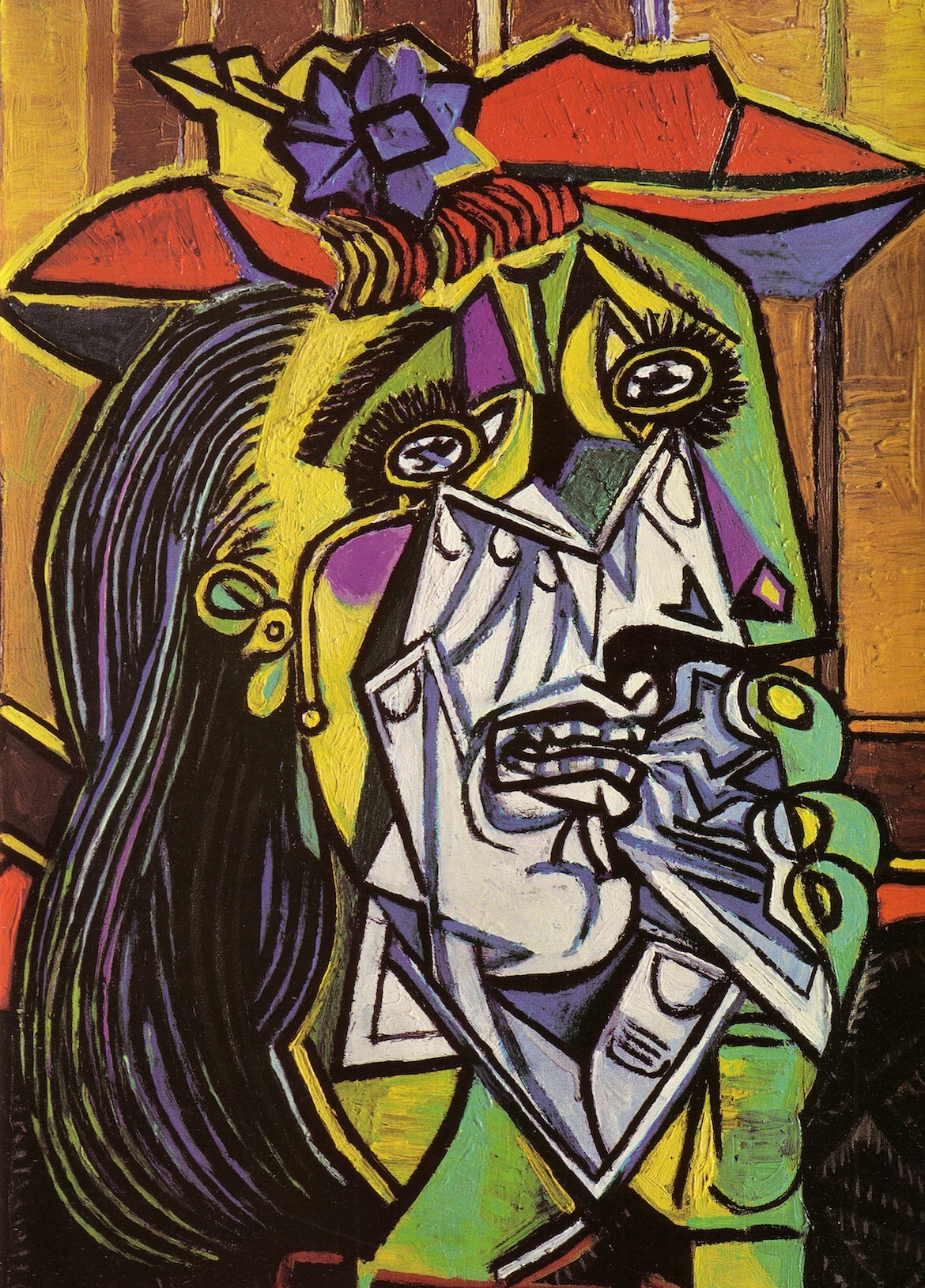Content Creation
What Content Creators Can Learn from Pablo Picasso
By Jonathan Crowl on May 15, 2018
Every creator, regardless of medium, knows what it's like to fall into a creative rut. There can be a whole range of reasons for this struggle: A lack of inspiration, a frustration with the work you're doing, even a paralyzing sense that you don't know what you're doing.
I've been writing for a living for 15 years, and it's still normal for me to be so stuck on a project that I wonder if I forgot how to tell a story. It feels like something you should intuitively know: We hear stories every day, we tell stories every day, so it should be easy to translate that experience into a strong piece of work.
But it rarely works that way when you're staring at a blank page. Or a blank canvas, for that matter. And for marketers tasked with creating content that tells a larger brand story, there's a risk of falling into bad creative habits that result in telling the same story, in the same way, over and over again.
This is where I turn to Pablo Picasso. He may be best known for certain styles and acclaimed pieces of work, but the true talent, perseverance, and artistic spirit that drove Picasso to such great heights is more evident when diving deeper into his catalog of works. If you're currently in a creative funk, I'm here to offer some motivating tips cribbed from one of the world's most renowned painters.
And if your creative juices happen to be flowing great, bookmark this article and come back to it later-your time will come.
Build a Complete Storytelling Toolkit
Picasso is best known for innovative art forms, most notably cubism, a modernist approach to art that plays with perspective. But before he rewrote the rules of painting, Picasso was classically trained at Spain's most distinguished art school of the time, according to the Guggenheim. In his early career, he was well-regarded for work that took on a more traditional form.
Picasso was only able to invent cubism after mastering these traditional painting techniques passed down from artists of the past. The lesson for content creators is simple: Before you can take on innovative approaches to storytelling, you need to have your fundamental skills in place. Innovation only comes after you've mastered basic storytelling techniques and have developed a broad, diverse toolkit from which to work.
Bear in mind that today that toolkit isn't entirely skill-based. Consider the role content tools can play in helping you identify and engage your audience. This includes tools that distribute and analyze your content, improving performance and offering insights to make a stronger impression on your content's consumers.
Develop a Distinct Style
Picasso is one of the best-known artists in the world today because his artistic styles were so unique. His cubist paintings, as well as later work in neoclassicism and even surrealism, are so distinct that even the casual art fan could look at those paintings and guess they were made by Picasso. He has become so well known for these styles, in fact, that in some cases, other artists' work is wrongly assumed to be the work of Picasso (do a Google search for the paintings of Juan Gris and tell me you wouldn't mistake those for Picasso's paintings if you encountered them in the wild).
Content producers can also achieve a distinctive style that becomes synonymous with their brand. Think of Upworthy's viral headlines or Tasty's overhead recipe videos. And it's not just media properties: Apple's content is often so identifiable that the company takes a minimalist approach with their brand name, knowing that the style and distinct voice of its content will be recognized and properly attributed by its audience.
Image attribution: Elvert Barnes
Explore New Modes of Storytelling
Picasso's discovery of cubism was an effort to find new ways to turn two-dimensional art into a new experience. This is only the best-known instance of a career focused on discovering new forms of expression and creation. While not every attempt to innovate earned the same scale of recognition as his cubist work, the process of experimentation paid off in the long run by leading him to what many consider his masterpiece: "Guernica," a black-and-white mural created roughly 30 years after his cubism rose to fame.
In a similar way, marketers should embrace experimentation as a way to uncover untapped opportunities in content creation. The digital landscape is changing so fast that experimentation is paramount: New storytelling styles are being discovered all the time, creating new modes of engagement with an audience. But it's critical for creators and managers to remember that not every experiment will be a success. To achieve new breakthroughs in the art of telling a story, marketers must accept the possibility of failure.
Embrace New Mediums
Picasso's best-known work is his paintings, but he also worked in sculpture, poetry, printmaking, and other forms. In these ways, Picasso represents the approach modern content creators should embrace in their own work. Being married to one content channel can be limiting, and it could prevent you from finding new, valuable ways to reach your audience.
With new mediums like VR, AR, and immersive content rising, it's possible that Picasso would have sought to experiment with these new forms had they been available to him. Other renowned artists of the time, such as Salvador Dali, experimented with new technology and experiences such as television and pixelation, according to the Dali Museum. Creators should lean into these new opportunities and see how these new channels provide something unavailable in their preferred mediums.
Someone like Picasso is a once-in-a-generation artist. But even if we can't match his level of success and renown, there are plenty of lessons to be taken from his life and work that will aid us in becoming better creators-especially ones willing to step out of the box and try something new.
For more stories like this, subscribe to the Content Standard newsletter.



